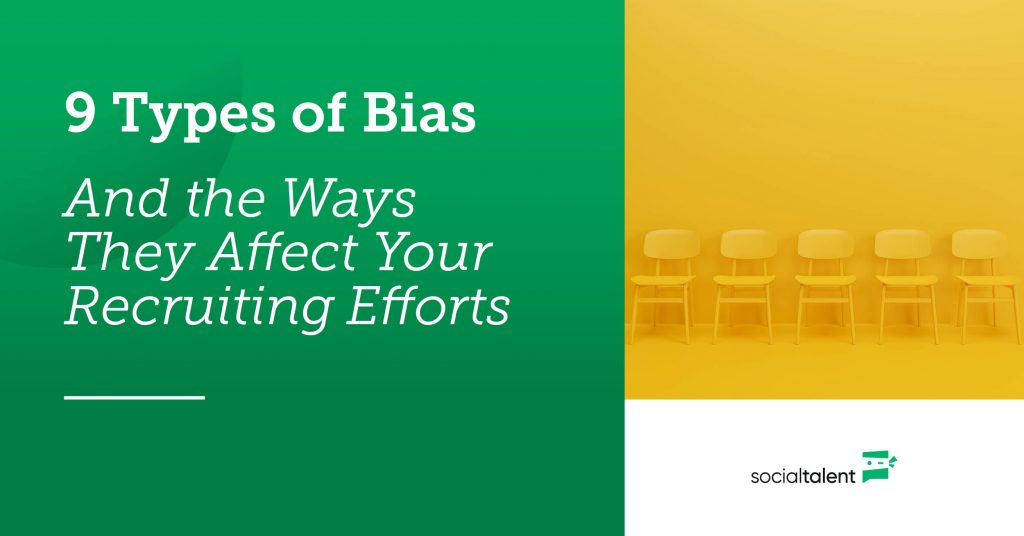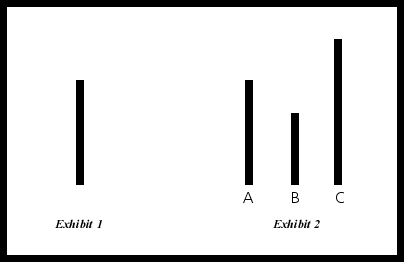
By David Deady
We make countless decisions every day without even realizing it. Even as you sit here reading this, you’re making decisions. Decisions about the content or the questions being asked of you, for example. And the answers to these are influenced heavily by what researchers refer to as unconscious bias.
What is unconscious bias?
Bias is an inclination or prejudice for or against one person or group. So, unconscious biases are unconscious feelings we have towards other people – instinctive feelings that play a strong part in influencing our judgements away from being balanced or even-handed.
One of the most prominent areas of life where bias can play out is the workplace. For example, one of the strongest biases we have in the workplace is gender bias. Why? Well, our feelings about gender and the stereotypes we’ve all associated with gender are something we’ve developed throughout our whole lives. Things like how or where we’ve been brought up, how we’ve been socialized, our exposure to other social identities and social groups, who our friends are/were, as well as media influences, all affect how we think and feel about certain types of people.
It’s important to mention, however, that most bias stereotypes do not come from a place of bad intent. It’s just a deep seated, unconscious stereotype that’s been formed in our brains through years of different influences we often had no control over.
Check out SocialTalent’s full suite of Diversity, Equity and Inclusion Training, expertly designed to help your organization promote diversity and be more inclusive.
How does bias affect our actions?
“Most of us believe that we are ethical and unbiased. We imagine we’re good decision makers, able to objectively size up a job candidate or a venture deal and reach a fair and rational conclusion that’s in our, and our organization’s, best interests,” writes Harvard University researcher Mahzarin Banaji in the Harvard Business Review. “But more than two decades of research confirms that, in reality, most of us fall woefully short of our inflated self-perception.”
Biases affects us and our decision-making processes in a number of different ways:
- Our Perception – how we see people and perceive reality.
- Our Attitude – how we react towards certain people.
- Our Behaviors – how receptive/friendly we are towards certain people.
- Our Attention – which aspects of a person we pay most attention to.
- Our Listening Skills – how much we actively listen to what certain people say.
- Our Micro-affirmations – how much or how little we comfort certain people in certain situations.
Whether we are aware of it or not, each and every one of these things will affect who we select to come in for an interview, how we interview them, who we hire and our reasons for hiring them. So, how do you stop yourself from falling prey to the dangers of unconscious bias? The first step is simple – make the unconscious, conscious. By acknowledging the different types of unconscious bias we can start to address them.
Looking to build a more diverse pipeline of talent? Download our e-book for essential tips and guidance.
Types of bias and how they affect your recruiting process
In recruitment, the following types of bias are all very common:
1. Conformity Bias
Based on a famous study that’s been around for decades, conformity bias relates to bias caused by group peer pressure. In the study, a group of people is asked to look at the picture above and say which line in Exhibit 2 matches the line in Exhibit 1. One individual is told to say what they think. The rest of the group is told to give the wrong answer.
We can see that line A of Exhibit 2 matches the line in Exhibit 1. But, when the individual who doesn’t know this is a test gives the correct answer is informed that the rest of the group has said Line B, in 75% of cases the individual decides to scrap their own opinion in favor of the groups’. Just think how this may play out in a panel talking about a candidate. If an individual feels the majority of the group are leaning towards/away from a certain choice, they will tend to go along with the group, rather than voice their own opinions.
2. Beauty Bias
This is the view that we tend to think the most handsome or beautiful individual will be the most successful. But this can also play out in terms of other physical attributes a person may have.
For example, while 60% of CEOs in the US are over 6 foot, only 15% of the total population is over 6 foot tall. And while 36% of US CEOs are over 6.2 feet, only 4% of the US population is over 6.2 feet tall. So again, this shows some bias in terms of how we perceive a CEO.
It is common that recruiters will look to fill a role with someone who shares similar physical attributes to the person who held that role before, or who they believe looks like the kind of person who should have the role based on their preconceived bias.
3. Affinity Bias
Affinity bias occurs when we see someone we feel we have an affinity with. Maybe we attended the same college? Perhaps we grew up in the same town? Or they remind us of someone we know and like.
When we interview someone we feel we have some affinity with, our micro-affirmations play out a bit more than they usually would. For instance, if they tell us they’re a little nervous we may smile at them more or offer more words of encouragement. Whereas, if a person we shared no affinity with told us the same thing, we perhaps wouldn’t be quite as warm towards them as we had been to the candidate we felt we shared a connection with. After the interview, you’d then speak in much higher terms of the first candidate and how much you feel they’d “fit in” over and above the second candidate.
Hiring for culture fit can be very problematic. Instead, look to hire for a culture add. Read more about it in our ebook.
4. Halo Effect
Halo is when we see one great thing about a person and we let the halo-glow of that significant aspect affect our opinions of everything else about that person. We are in awe of them, but due entirely to one thing.
For example, when looking through someone’s CV we may see they went to a highly regarded college, or they had undertaken some very sought after work experience program. Due to the halo effect, we may tend to see everything else about that person surrounded by the glow of a singular achievement.
5. Horns Effect
The horns effect is the direct opposite of the halo effect, in that when we see one bad thing about a person and we let it cloud our opinions of their other attributes.
For example, when interviewing someone we might be put off by the fact that they speak very slowly because our unconscious bias may have caused us to assume this as a sign of unintelligence. Cast in this light, everything they say or do for the rest of the interview could be tainted by our judgement. Difference should be celebrated and can often be a key reason why a candidate should be hired, to shake up the status-quo.
6. Similarity Bias
Naturally, we want to surround ourselves with people we feel are similar to us. And as a result, we tend to want to work more with people who are like us too.
In terms of recruitment that may mean that we are more open to hiring individuals we see parts of ourselves in. This can be rather dangerous and lead to a culture of homogeneity.
7. Contrast Effect
This plays out regularly in recruitment, particularly amongst those who spend large amounts of time sifting through CVs or conducting a vast multitude of interviews.
For example, if we’re looking at a number of CVs in a row, one after the other, we tend to compare and contrast them. We judge whether or not the person in front of us did as well as the person that came before them. When really, the only thing we should be comparing are the skills and attributes each individual has, to the skills and attributes required for the job, not those of the person that came directly before them.
8. Attribution Bias
This is the most common form of bias in the recruitment process. People constantly make attributions regarding the cause of their own and others’ behaviors. However, attributions do not always accurately reflect reality.
If we do something well we tend to think it’s down to our own merit and personality. When we do something badly we tend to believe that our failing is due to external factors that adversely affected us and prevented us from doing our best.
When it comes to other people, we tend to think the opposite. If someone else has done something well, we consider them lucky. But if they’ve done something badly, we tend to think it’s due to their personality or bad behavior.
9. Confirmation Bias
This is one that recruiters have to be extremely careful about. When we make a judgement about another person, we subconsciously look for evidence to back up our own opinions of that person. We do this because we want to believe we’re right and that we’ve made the right assessment of a person.
The danger of conformity bias in recruitment is that our own judgement could be very, very wrong and could cause us to lose a great candidate for the job.
So, what’s next?
Understanding the different kinds of unconscious bias is the first step. Next, you have to actively work to not let these impact your decision-making when interviewing candidates. It’s not easy, but the more you understand and check yourself, the more progress you’ll make.





